02:24
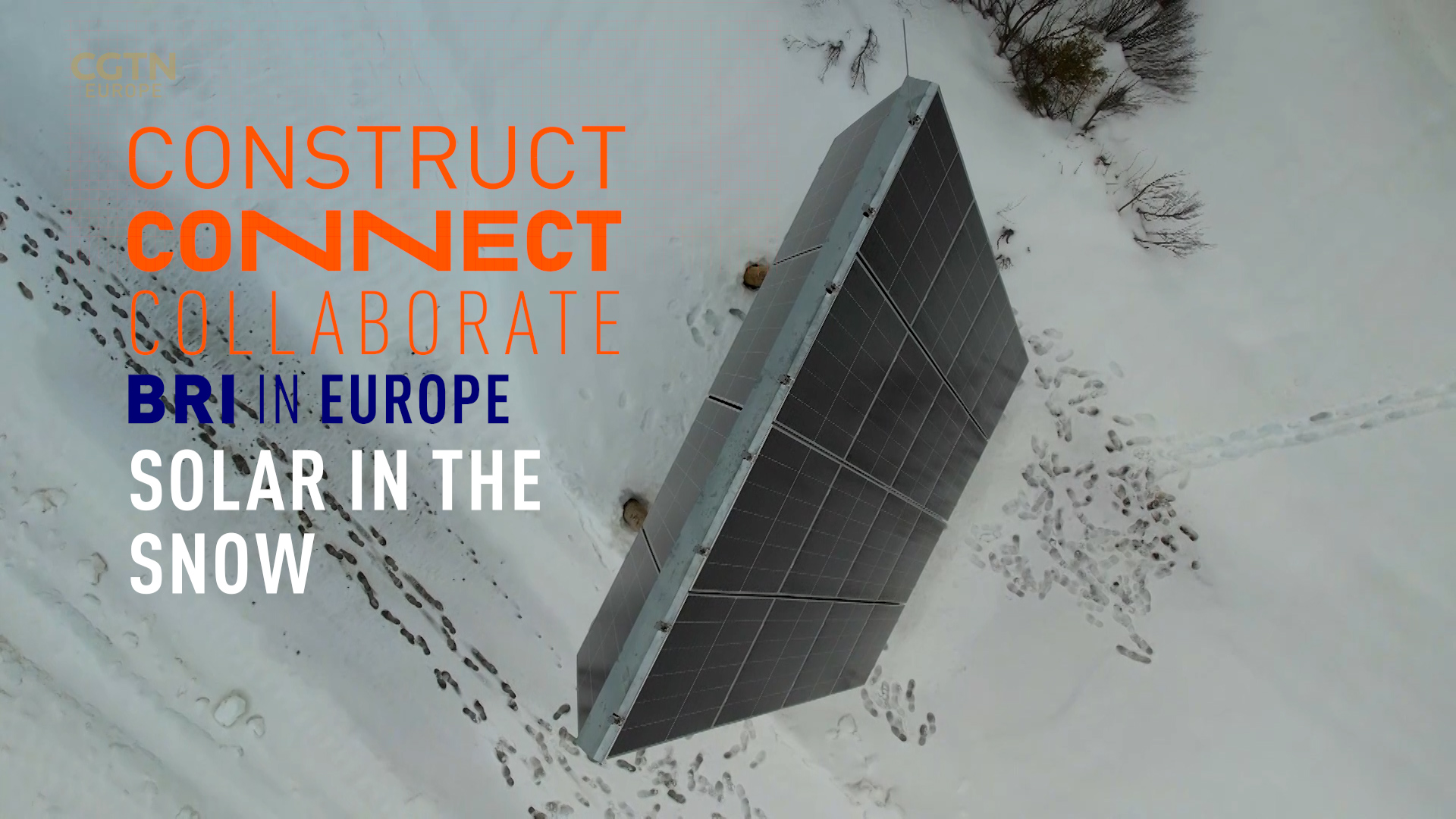
A new solar power invention seems to be solving the problem of Austria's reduced sunlight during winter months. The so-called solar poplar - a tree-like construction placed on mountain tops - produces up to 10 times more energy than regular systems, according to its inventor Hermann Kopetz.
Common solar power plants in Alpine valleys generate little power in the dark and foggy winter months. At the same time Austria has the greatest electricity demand in this period.
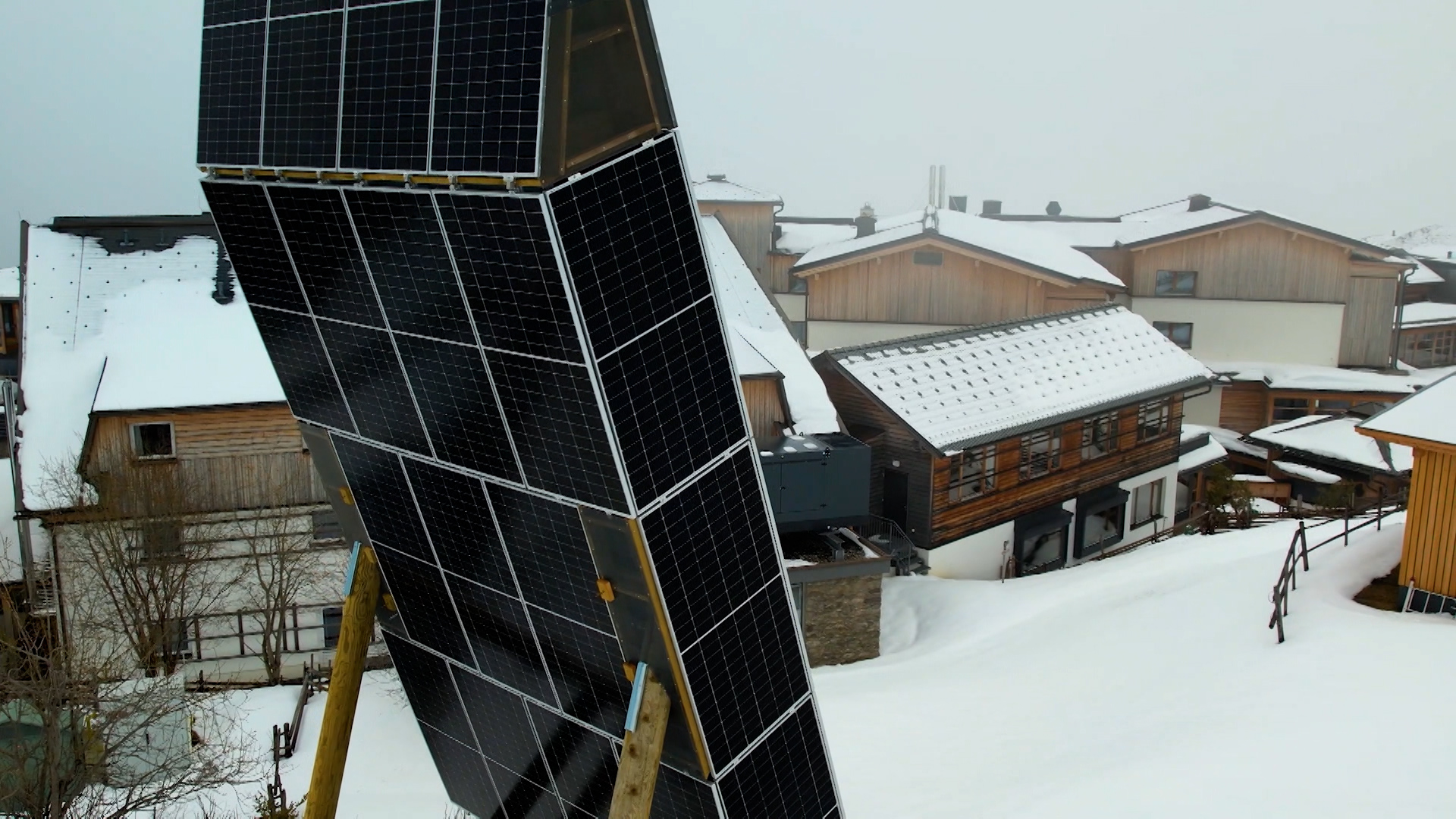
The Solar Poplar construction has panels on each side to also use the light reflection on the snow. /Gasser/CGTN
The Solar Poplar construction has panels on each side to also use the light reflection on the snow. /Gasser/CGTN
But the solar poplar turns this problem into an opportunity. "This construction has been in operation since about January and the actual values we measure are above expectations," says Kopetz who accompanied a CGTN team to his first prototype located at the Feuerberg resort on the Southern Austrian Gerlitzen mountain.
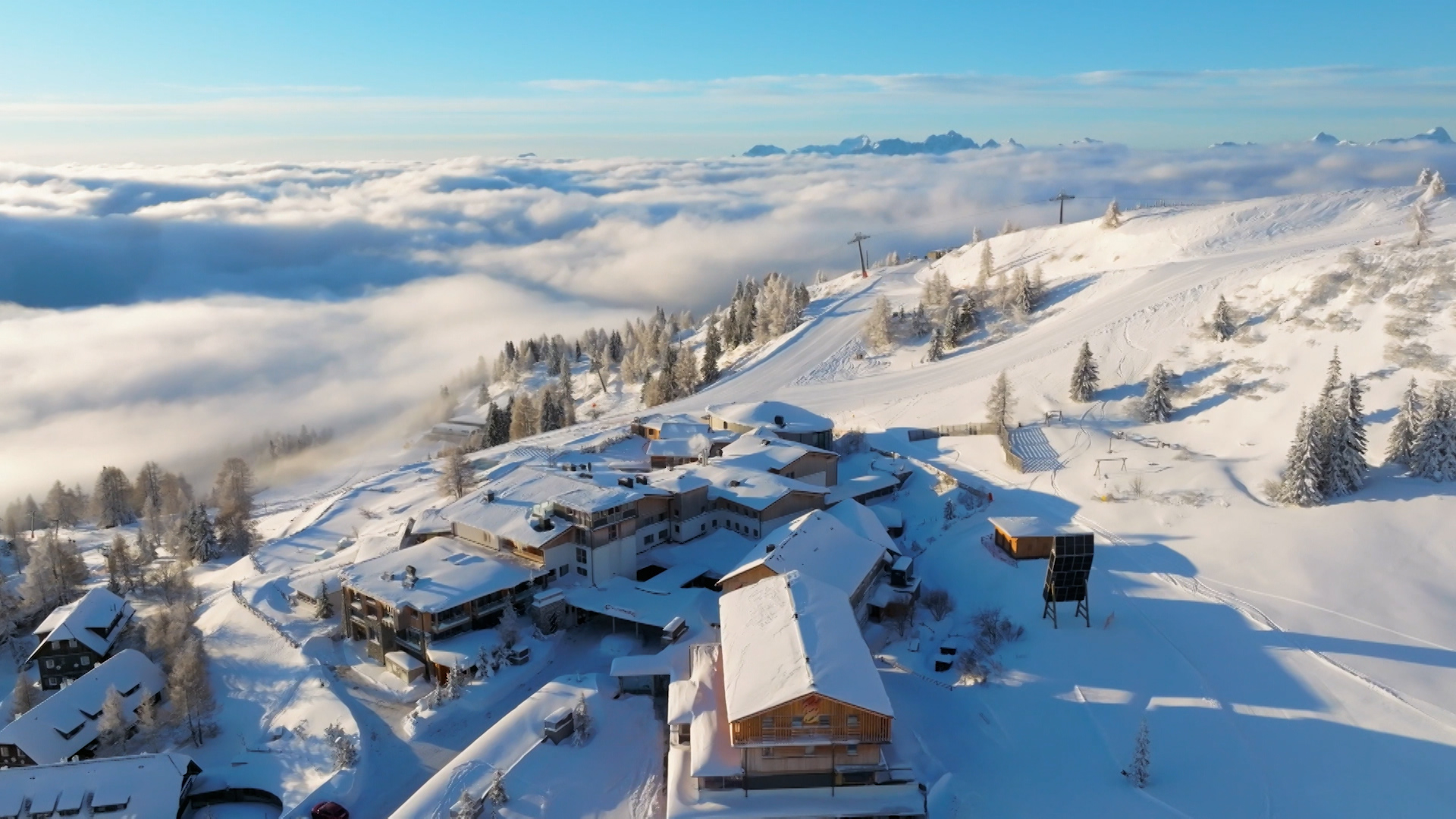
The black solar poplar prototype is located next to the Feuerberg resort. /Christoph Rossmann/CGTN
The black solar poplar prototype is located next to the Feuerberg resort. /Christoph Rossmann/CGTN
In order to switch to green energy, the resort had asked Kopetz to build a solar power system suitable for the high altitude.
"On a sunny day we earn up to five percent of our resort's energy demand," Feuerberg owner Emanuel Berger says. In the future, he wants to install more of these poplars to cover the whole resort's energy usage.
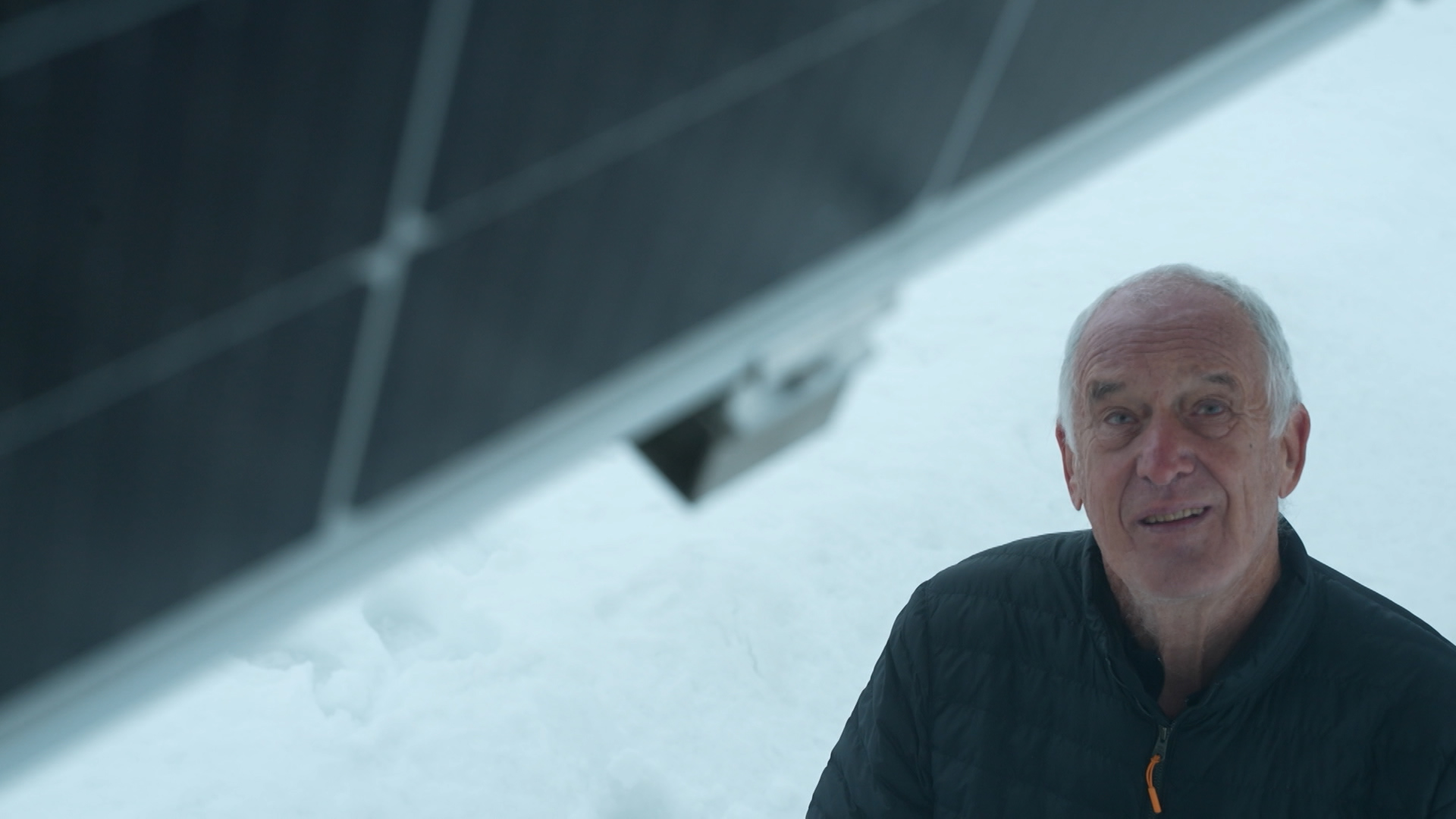
Poplar inventor Kopetz had been experimenting on his own mountain cabin before building his first prototype. /Gasser/CGTN
Poplar inventor Kopetz had been experimenting on his own mountain cabin before building his first prototype. /Gasser/CGTN
But how does this poplar work? "While common solar systems on roofs are perfectly adjusted for vertical summer sun rays, they are less suitable for flat winter radiation," Kopetz explains. The solar poplar construction is perfectly tilted to catch winter sun rays and to cause the snow to slide off. Thanks to the light reflection on the snow, additional solar energy is produced.
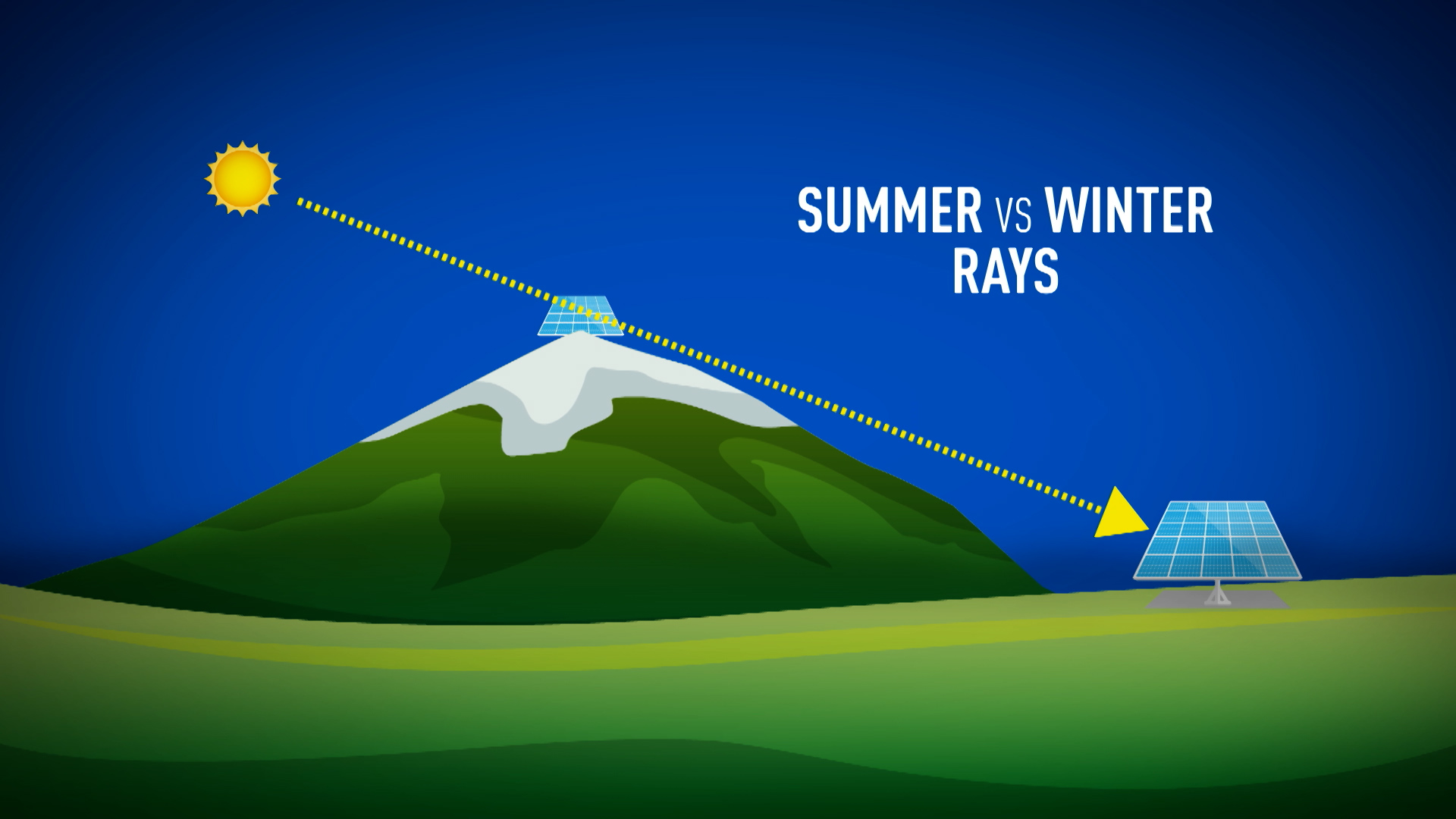
In winter, due to its lower position the sun emits flat rays. /CGTN
In winter, due to its lower position the sun emits flat rays. /CGTN
The EU wants to make solar power its single biggest energy source by 2030 meaning the bloc would have to triple its current solar energy generation in the next seven years. It's working towards this goal with China, which produces over three quarters of all of Europe's solar panel imports.
While EU member Austria has been relying mostly on hydropower, new solar mountain systems could change the alpine country's strategy.
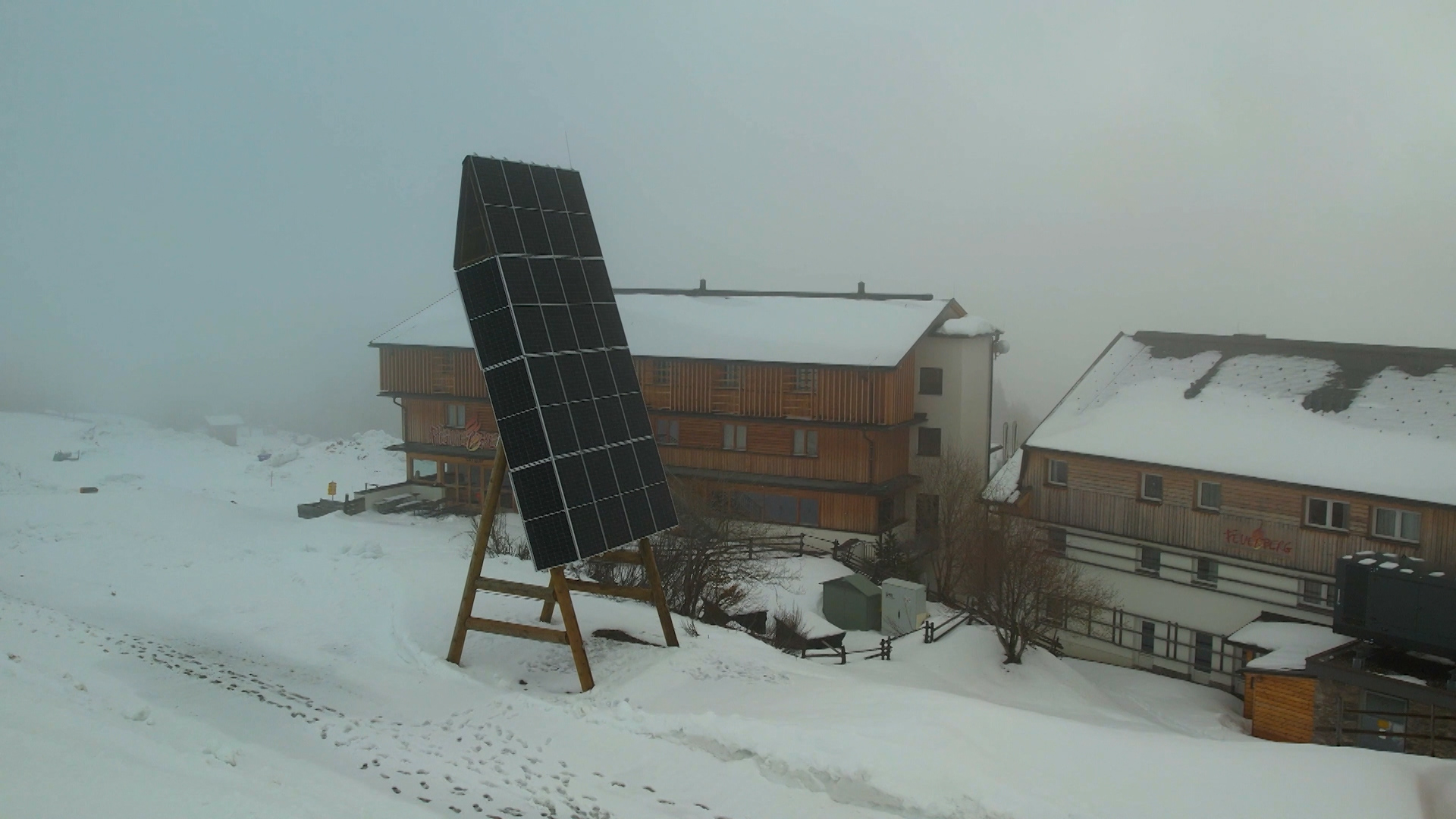
The solar poplar is about 10 meters tall./Gasser/CGTN
The solar poplar is about 10 meters tall./Gasser/CGTN
Kopetz has already been seeing a lot of interest for his construction, especially coming from Austria's winter tourism branch, which is one of the country's main service industries. "They would like to build such devices next to ski lifts as they need the energy exactly when there is nice weather so they can use the solar energy directly without an intermediate storage.”
Kopetz already received the Austrian patent for his solar poplar, and he says the international patent approval is pending. This means we could be seeing a lot more of this solar poplar design in the future.
Subscribe to Storyboard: A weekly newsletter bringing you the best of CGTN every Friday